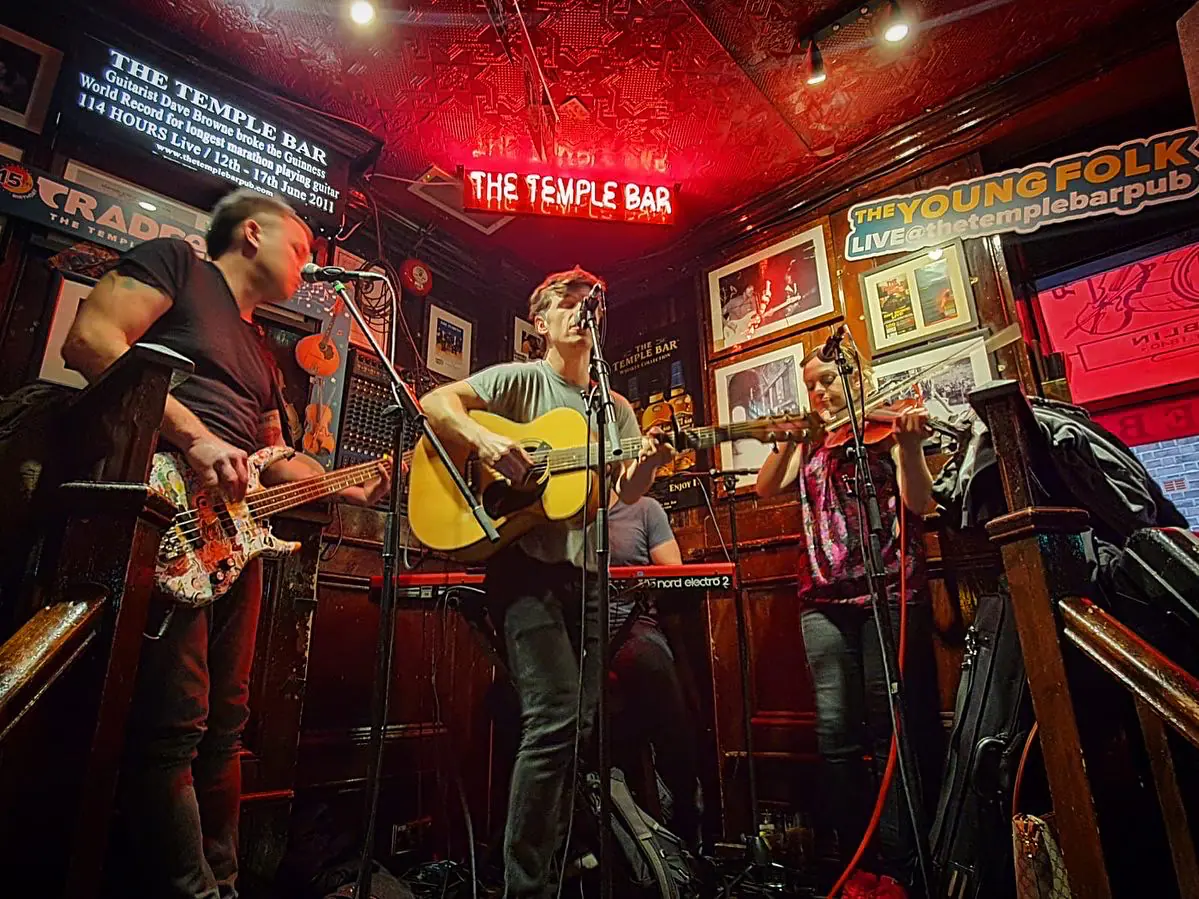Your basket is currently empty!

Music is a universal language with almost infinite variations that just about everyone alive enjoys. Irish traditional music, its long heritage, and the instruments that make it so distinctive have made a profound impact on music around the world.
If you’re not familiar with the instruments used in traditional Irish music, here’s a quick primer.
The bodhrán (pronounced bow-rawn) is a smallish frame drum, held upright on the thigh and played with either the hand or a tipper (stick). It could be considered the heartbeat of traditional Irish music with a history that goes back to ancient times. Made from a wooden frame and, (traditionally) a goatskin membrane, the bodhrán produces a distinctive, earthy rhythm that underpins many traditional Irish tunes. In modern times, it remains an essential instrument in sessions and live performances.
The Uilleann (pronounced ill-un or eel-un) pipes, also called the Irish pipes or union pipes, are known for their hauntingly beautiful sound. They are distinct from the Scottish bagpipes, with a somewhat softer sound quality, and are more sophisticated in design. These bellows-driven pipes have a range and tonal quality that make them perfect for solo and ensemble playing. The bellows or operated by moving the elbow in and out, and it’s this that gives the pipes their name – Uilleann is Irish for elbow. Their history goes back to the 18th century, and today they’re an integral part of both traditional and modern Irish music. Renowned musicians like Liam O’Flynn and Paddy Keenan have showcased the pipes’ incredible versatility.
The tin whistle, often referred to as the penny whistle, is a deceptively simple instrument. Its history dates back to the early 19th century, and it’s often overlooked as a serious instrument. It becomes magical though in the hands of a skilled player, demonstrating an intricate and fun melodic range. It’s become a staple in Irish traditional music and is frequently used in modern folk and rock bands.
The fiddle, with its roots in European classical music, found its way into Irish culture and became a cornerstone of traditional music. Its history in Ireland is complex and multifaceted, but it has become one of the most beloved instruments in the country for traditional Irish music.
The wooden flute is another instrument you’ll often see played in Irish music. With a sweet and airy sound, it’s an instrument that has enchanted audiences for generations. Listen to Matt Molloy of the Bothy Band and The Chieftains famous for stunning Irish flute music. The flute’s expressive quality resonates across both traditional and contemporary Irish music.
While all of these instruments are traditional with roots stretching back in time, they’re hardly relics. Irish music evolves and changes, with each new generation adding a vibrant new, and innovative twist. Irish fusion bands for instance, such as Kíla and Flook, have brought traditional Irish music to international audiences with elements of rock, jazz, and world music.
Other traditional instruments in Irish music include the accordion, banjo, and of course the guitar, mandolin, the harp, and the Irish bouzouki. This instrument is a little like a lute with a long neck. It was adapted from the original Greek instrument for Irish music and is often used to accompany the flute or fiddle.
The eternal popularity of trad sessions in pubs, plus music festivals across Ireland, provides a platform for both seasoned musicians and newcomers to celebrate their love for traditional Irish music. It’s a joyful, spontaneous tradition of communal music-making, and will always have a core place in modern Irish music culture. Whether you’re listening to a session in The Temple Bar Pub or discovering the latest fusion band, you’ll find yourself immersed in a world of rhythm and melody like no other.
Please note, we do not take bookings or reservations.